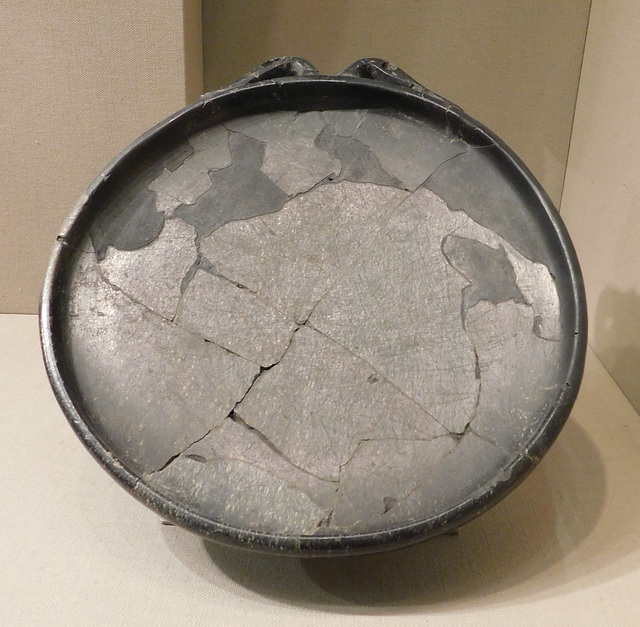Dish with Ducks Heads in the Metropolitan Museum o…
Yuny and Renenutet in the Metropolitan Museum of A…
Detail of Yuny and Renenutet in the Metropolitan M…
Detail of Yuny and Renenutet in the Metropolitan M…
Grave Stele with the Figure of a Boy from Palmyra…
Grave Stele with the Figure of a Boy from Palmyra…
Plate with Youths and Winged Horses in the Metropo…
Plate with Youths and Winged Horses in the Metropo…
Plate with a Female Figure Riding a Fantastic Beas…
Plate with a Female Figure Riding a Fantastic Beas…
Cult Vessel in the Form of a Tower in the Metropol…
Cult Vessel in the Form of a Tower in the Metropol…
Gravestone with the Bust of a Woman from Palmyra i…
Gravestone with the Bust of a Woman from Palmyra i…
Detail of a Gravestone with the Bust of a Woman fr…
Detail of a Gravestone with the Bust of a Woman fr…
Marble Relief of Birds in the Metropolitan Museum…
Marble Relief of Birds in the Metropolitan Museum…
Reliquary in the Shape of an Arm in the Metropolit…
Reliquary in the Shape of an Arm in the Metropolit…
Terracotta Kylix (Eye Cup) in the Metropolitan Mus…
Terracotta Kylix (Eye Cup) in the Metropolitan Mus…
Detail of a Terracotta Kylix (Eye Cup) in the Metr…
Reliquary Bust of St. Barbara in the Metropolitan…
Reliquary Bust of St. Barbara in the Metropolitan…
Pair of Finials in the Shape of Mythical Beasts in…
Pair of Finials in the Shape of Mythical Beasts in…
Breastplate in the Shape of a Shirt in the Metropo…
Breastplate in the Shape of a Shirt in the Metropo…
old Funerary Mask in the Metropolitan Museum of Ar…
Gold Funerary Mask in the Metropolitan Museum of A…
Bronze Bust of Menander in the Getty Villa, June 2…
Bronze Bust of Menander in the Getty Villa, June 2…
Detail of a Kylix with an Athlete Applying Oil in…
Detail of a Kylix with an Athlete Applying Oil in…
Kylix with an Athlete Applying Oil in the Getty Vi…
Kylix with an Athlete Applying Oil in the Getty Vi…
Detail of a Kylix with a Reveler Attributed to Mak…
Detail of a Kylix with a Reveler Attributed to Mak…
Kylix with a Reveler Attributed to Makron in the G…
Kylix with a Reveler Attributed to Makron in the G…
Mina with a Herm, Cornucopias, and Grain in the Ge…
Mina with a Herm, Cornucopias, and Grain in the Ge…
Statuette of a Seated Lion in the Getty Villa, Jun…
Statuette of a Seated Lion in the Getty Villa, Jun…
See also...
Keywords
Authorizations, license
-
Visible by: Everyone -
All rights reserved
-
121 visits
Dish with Ducks Heads in the Metropolitan Museum of Art, September 2018


Dish with ducks' heads
ca. 6th–4th century B.C.
Object Details
Period: Achaemenid
Date: ca. 6th–4th century B.C.
Geography: Iran, Persepolis
Culture: Achaemenid
Medium: Stone, black
Dimensions: H. 3.07 in. (7.8 cm); Diam. 10 3/4 (27.3 cm)
Classification: Stone-Vessels
Credit Line: Rogers Fund, 1948
Accession Number: 48.98.14
This round stone tray sits on a high ring base. It has a short rim, with a handle in the form of two duck or goose heads back to back, with their beaks connecting to the edge of the tray. It is made of a black stone, and it shows signs of having been smashed in antiquity.
This tray was excavated in the Treasury at Persepolis, the capital of the Achaemenid Persian Empire. It was found along with nearly 600 other stone trays and vessels. Possibly these were part of the Persian king’s table settings. They were probably destroyed by the soldiers of Alexander the Great when they captured Persepolis in 330 B.C. The duck heads on the handle mimic Egyptian stone vessels, which raises the possibility that the tray was made in Egypt, or, like much of the architecture at Persepolis, was inspired by Egyptian examples. Indeed, some stone vessels bearing hieroglyphic inscriptions naming Egyptian pharaohs were also found in the Treasury.
Text from: www.metmuseum.org/art/collection/search/323797
ca. 6th–4th century B.C.
Object Details
Period: Achaemenid
Date: ca. 6th–4th century B.C.
Geography: Iran, Persepolis
Culture: Achaemenid
Medium: Stone, black
Dimensions: H. 3.07 in. (7.8 cm); Diam. 10 3/4 (27.3 cm)
Classification: Stone-Vessels
Credit Line: Rogers Fund, 1948
Accession Number: 48.98.14
This round stone tray sits on a high ring base. It has a short rim, with a handle in the form of two duck or goose heads back to back, with their beaks connecting to the edge of the tray. It is made of a black stone, and it shows signs of having been smashed in antiquity.
This tray was excavated in the Treasury at Persepolis, the capital of the Achaemenid Persian Empire. It was found along with nearly 600 other stone trays and vessels. Possibly these were part of the Persian king’s table settings. They were probably destroyed by the soldiers of Alexander the Great when they captured Persepolis in 330 B.C. The duck heads on the handle mimic Egyptian stone vessels, which raises the possibility that the tray was made in Egypt, or, like much of the architecture at Persepolis, was inspired by Egyptian examples. Indeed, some stone vessels bearing hieroglyphic inscriptions naming Egyptian pharaohs were also found in the Treasury.
Text from: www.metmuseum.org/art/collection/search/323797
- Keyboard shortcuts:
Jump to top
RSS feed- Latest comments - Subscribe to the comment feeds of this photo
- ipernity © 2007-2025
- Help & Contact
|
Club news
|
About ipernity
|
History |
ipernity Club & Prices |
Guide of good conduct
Donate | Group guidelines | Privacy policy | Terms of use | Statutes | In memoria -
Facebook
Twitter

Sign-in to write a comment.